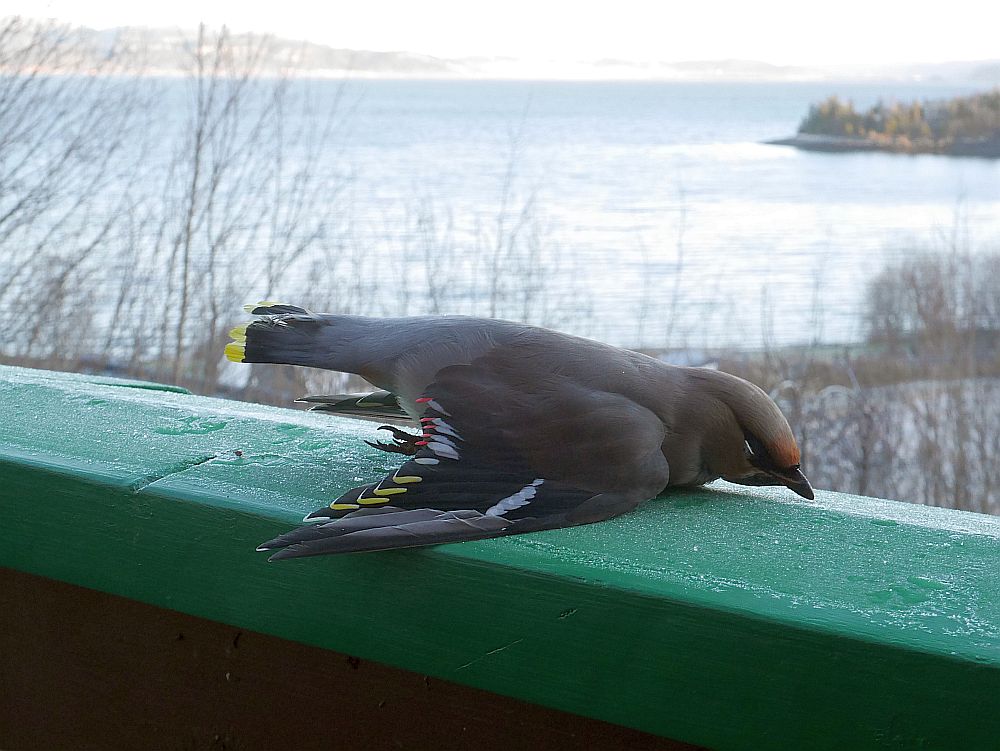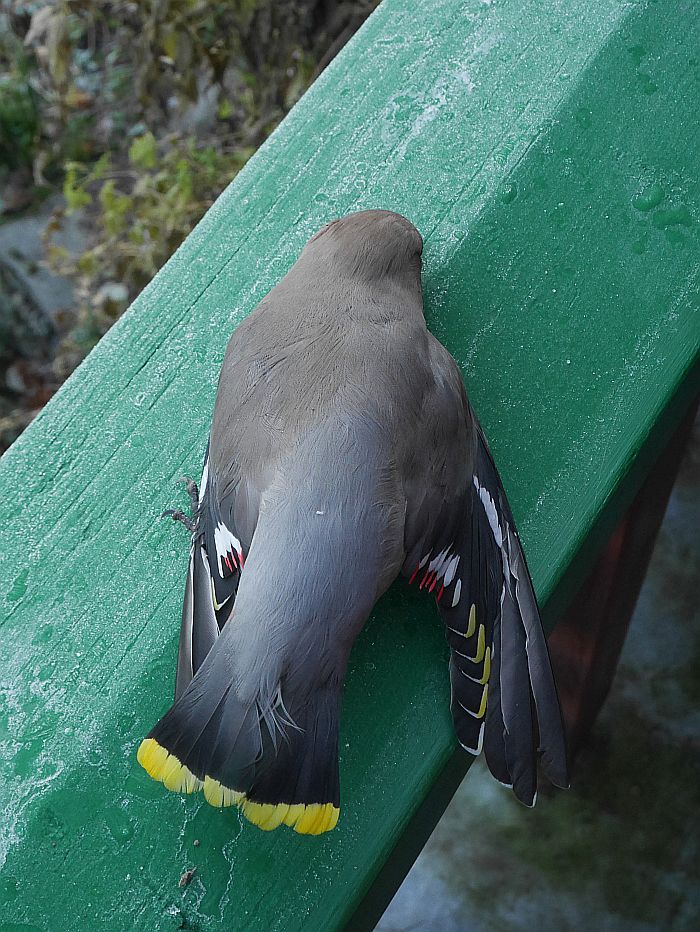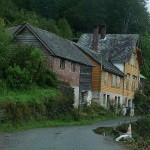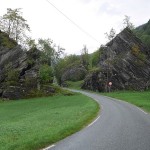1 or 2 fieldfares (gråtrost) normally overwinter in the garden and this winter has been no exception. They appear in autumn attracted to the cultivated and wild fruit. Fallen apples then become most important as the winter progresses. When the first deep snow arrives, I help them by putting out a few apples that makes it easier for them. The birds are very territorial, defending their cache of apples quite aggressively against other fieldfares. I put out apples in two parts of the garden which has lead to two birds overwintering. They are quite shy and have good vision, so only slight movement in windows puts them up. I’ve gradually moved the apples closer to the house and yesterday I put some apples on my balcony only a couple of metres from where I work….to my surprise, it wasn’t long before a bird found them and I made this video today!
Tag Archives: Apples
Seed saving talk weekend
Thanks to KVANN (Norwegian Seed Savers) colleague Andrew McMillion for coming up to Trondheim to give his seed saving course for local KVANN and Væres Venner Community Garden members!
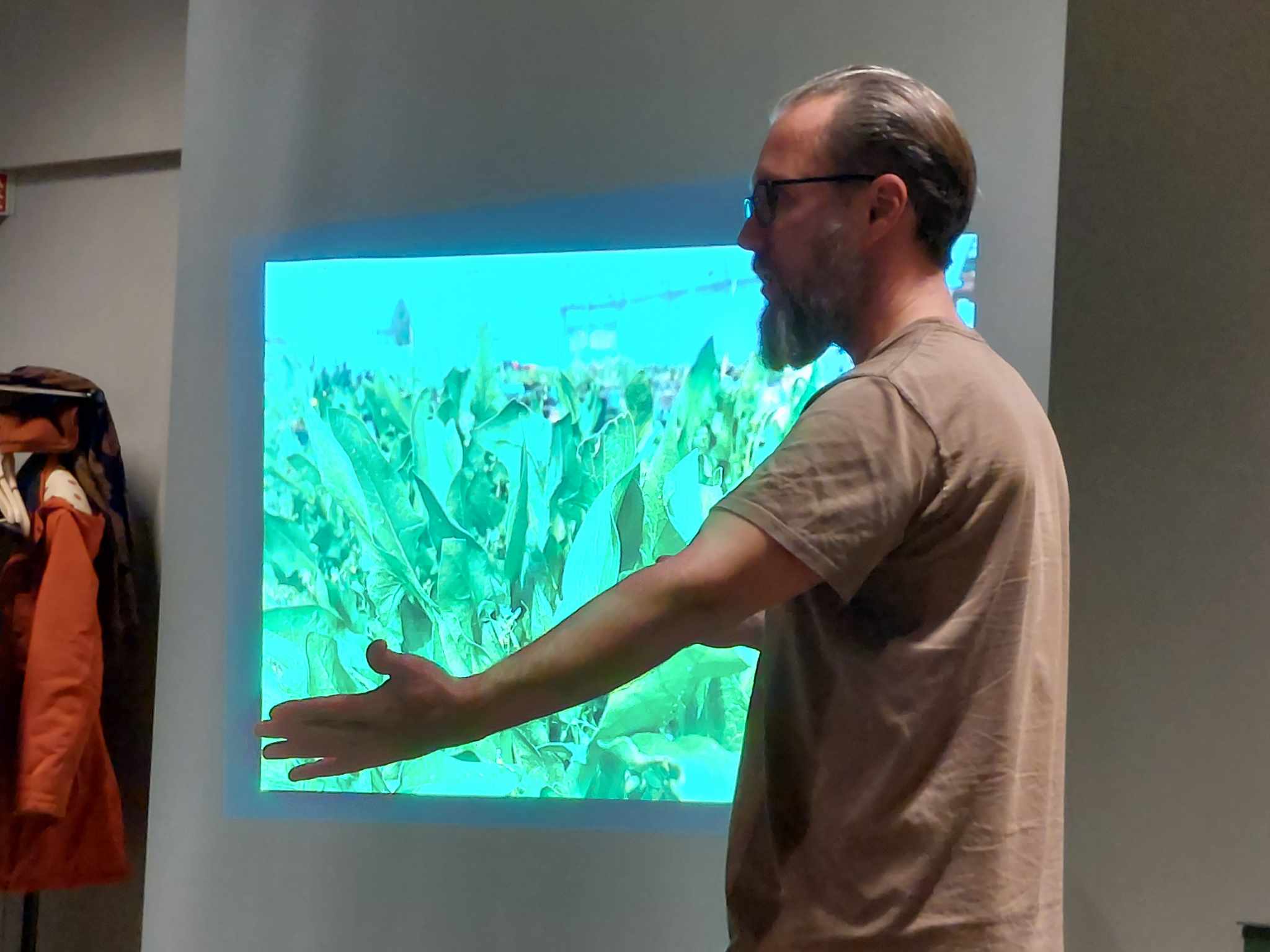
…and there was time for a Malvik visit, a seed saving and breeding chat, a tour of my seed boxes and a little salad with Witloof chicory and dandelion pizza.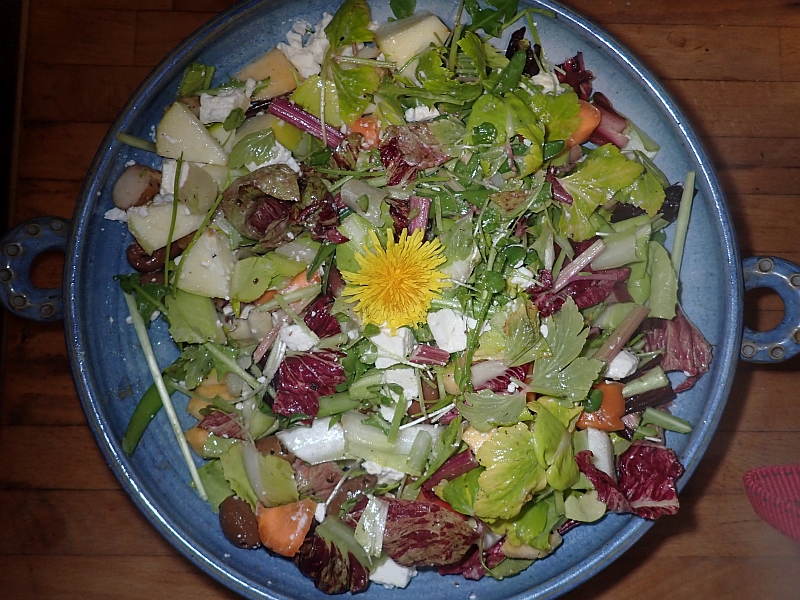
 Salad ingredients: Celery, three chicory varieties, dandelion (including one flower), carrot, Japanese yams, Allium cernuum and Hablitzia (from the garden), Hristo’s onion (Allium flavescens x nutans?), oca (2 varieties), apple (Aroma), horseradish shoots, garlic, chives, wild buckwheat shoots and turnip “Målselvnepe”
Salad ingredients: Celery, three chicory varieties, dandelion (including one flower), carrot, Japanese yams, Allium cernuum and Hablitzia (from the garden), Hristo’s onion (Allium flavescens x nutans?), oca (2 varieties), apple (Aroma), horseradish shoots, garlic, chives, wild buckwheat shoots and turnip “Målselvnepe”
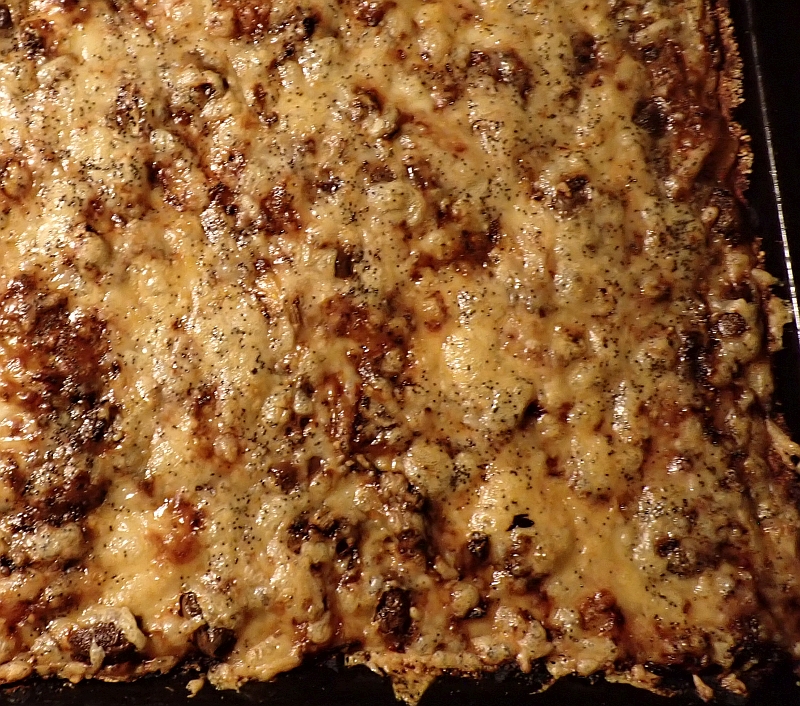
…and my seed archive: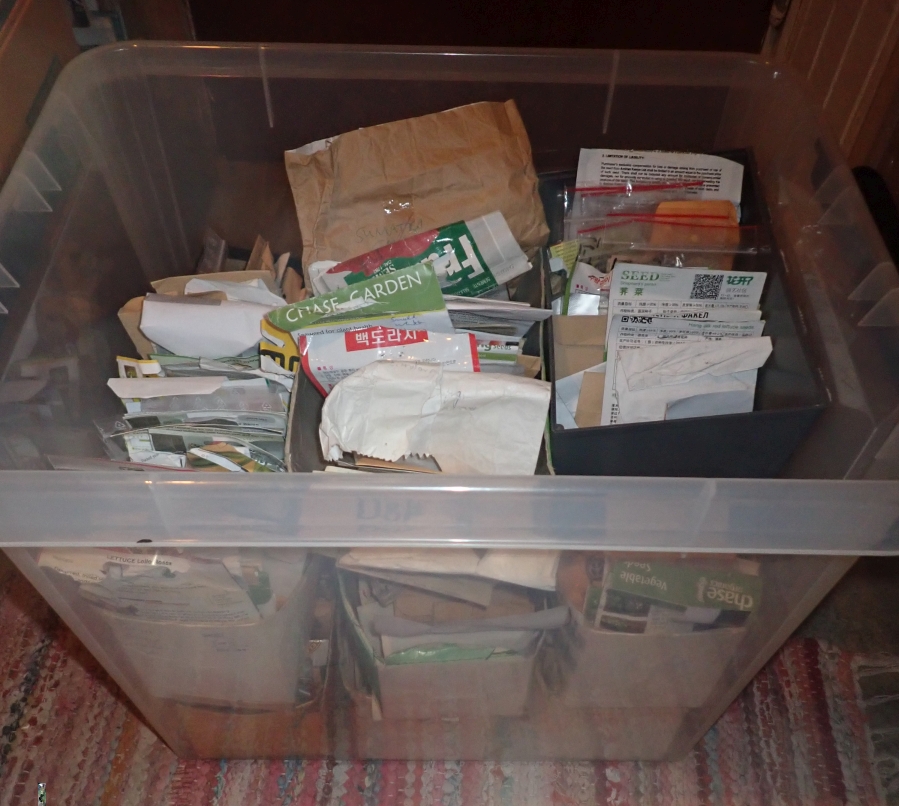
Daniil and the Apples
Having survived the wapato harvest last week (see https://www.edimentals.com/blog/?p=31597), our helper Daniil Titov was put to another challenging, harvesting the last apples….there are always many apples that we cannot reach with the apple picker, so tree shaking has to be resorted to as it’s too dangerous to use ladders on the steep slope. These will be dried in the near future. We already have enough for eating fresh until April in this year’s bumper harvest of Aroma apples. There are still quite a few at the top of the tree which couldn’t be shaken down, left for the birds.

Rose-ringed parakeet
Finally, having heard the bird for several months, a rose-ringed parakeet / halsbåndparakitt (blue mutation) finally turned up in the garden today and sat eating apples in good view of the living room for some time! It’s known to be an escaped cage bird and several attempts have beem made to capture it. 



Is feeding birds a good thing?
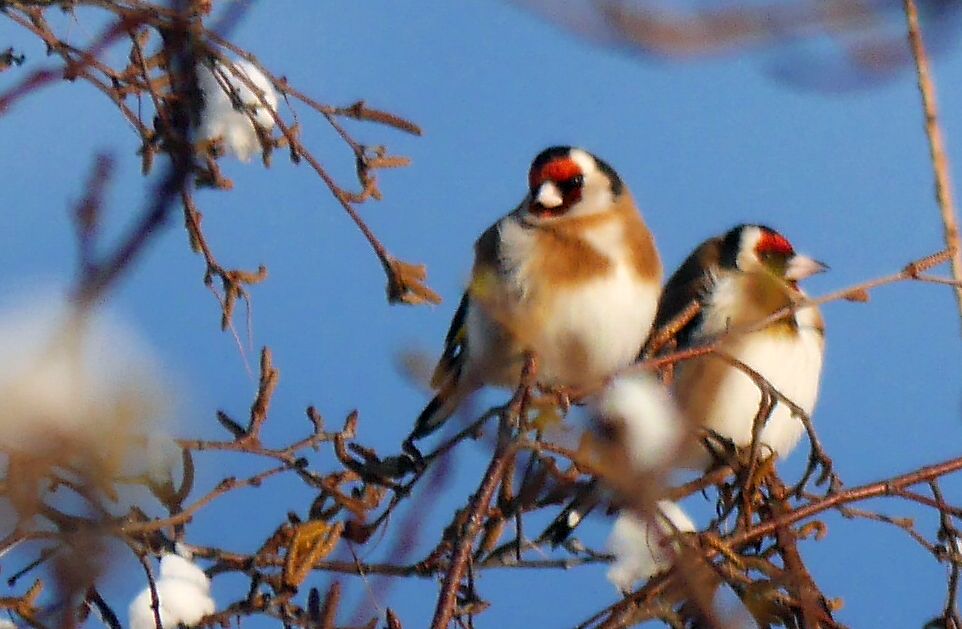
Feeding birds in winter isn’t necessarily a good thing and at least one study has shown that birds lay lower numbers of eggs when fed well, perhaps due to an unnatural unbalanced oil-rich diet: https://blog.nature.org/science/2015/01/05/winter-bird-feeding-good-or-bad-for-birds
However, there are many studies showing the opposite. But is good winter survival and artificially high populations necessarily a good thing apart from entertaining us and increasing awareness of the natural world.
Then there’s the spread of disease at bird feeders as with the greenfinch (grønnfink) in the UK (populations plummeted and bird feeders no doubt contributed to the spread). That birds are discouraged from migrating and stay in the same area year round can also lead to greater exposure to disease.
But what about the production of bird food? That happens often in large fields, mostly using conventional BigAg non-organic systems which directly impacts local bird populations by pesticides and habitat loss. Here in Norway, little of the bird feed is grown in-country.
For these reasons, I try as far as possible to provide natural food for the birds so that they can find alternatives and I can delay putting out food as long as possible. Home grown apples are put out for the thrushes, I tidy seed heads in spring and nettle seeds loved by finches are allowed to hang all winter. Local grain can also be put out for yellowhammers (gulspurv).
In the case of goldfinches (stillits), their main food is burdock (borre) and I have introduced Arctium lappa (greater burdock / storborre) to my garden for them and greenfinches (grønnfink). However, at this time of year they tend to move over to the birdfeeder.
Here’s a couple of videos from the weekend of these beautiful birds that once were rare in this part of Norway, but are becoming more common each year. See other goldfinch posts here: https://www.edimentals.com/blog/?s=goldfinch
The return of the waxwings
The first two videos show waxwings eating apples opened up by fieldfares and blackbirds yesterday and also eating guelder rose (krossved) berries, so far not touching the elderberries (svarthyll).
Earlier in the day, the waxwings were hunting insects on birch trees and occasionally high into the air in pursuit of insects:
…and the morning after, they had discovered the yew berries!
…and on unharvested redcurrants (rips)….with a fieldfare (gråtrost) and brambling (bjørkefink) at the end of the video!
RIP Bombycilla garrulus
I can only remember once finding a dead waxwing next to the house (and on occason there can be up to 1,000 of them in the garden).
Perennialen II: Alvastien Telste


